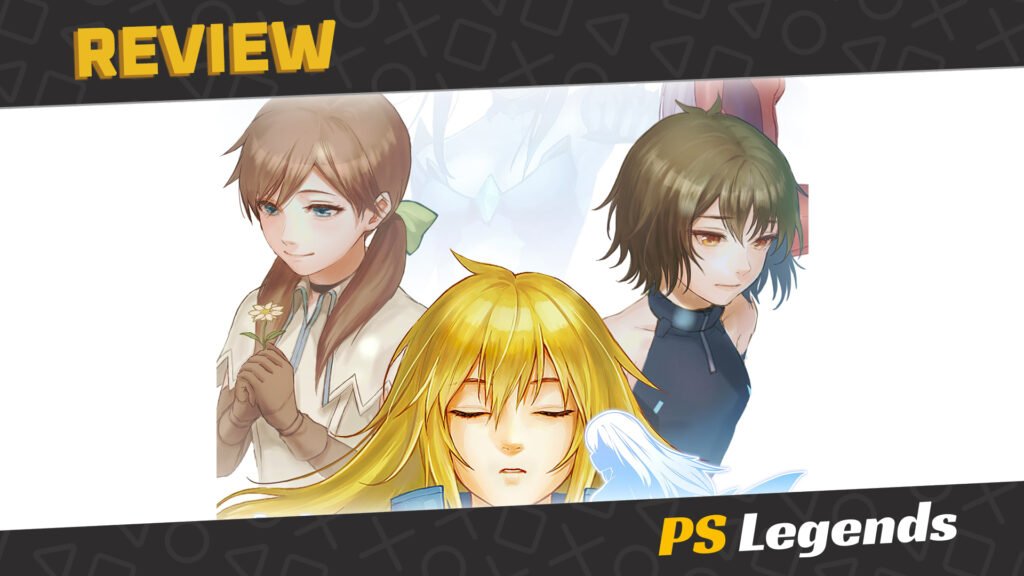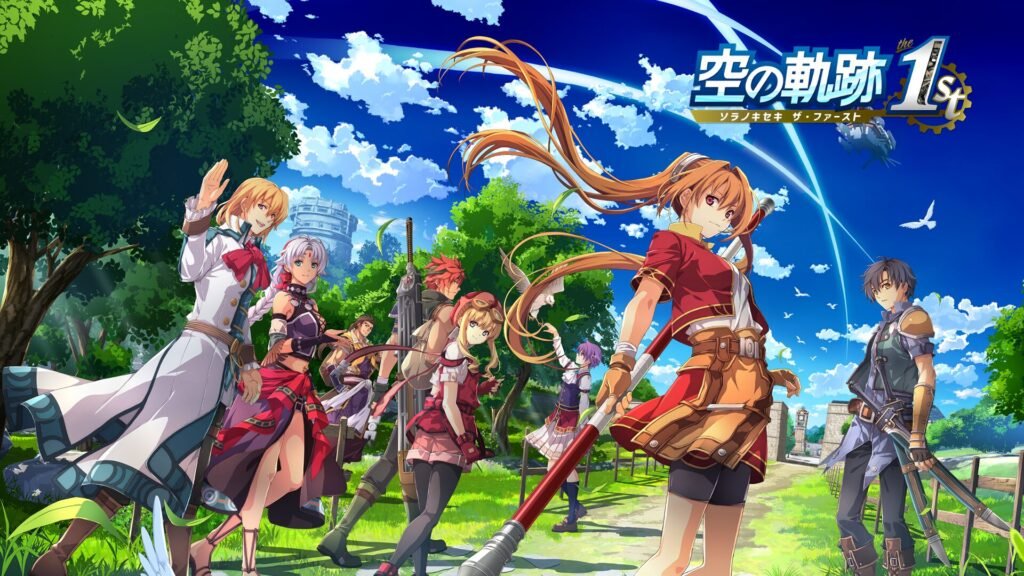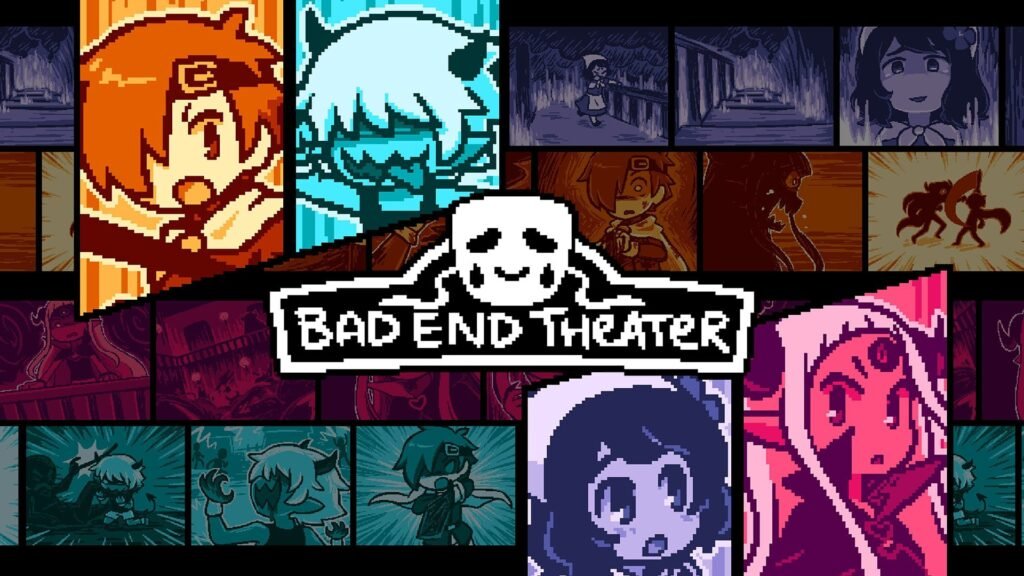Taking every element which made Final Fantasy VII special, Light Fairytale renames and remixes these components to create a new yet familiar game. This isn’t simply a Final Fantasy VII rip-off, it’s a true homage from a true fan. Expect chibi characters, turn-based combat and a modern yet steampunk world full of life, challenges and personality.
On This Page
Introduction
Light Fairytale Episode 2 is the second chapter in an episodic homage to Final Fantasy VII. This is the product of Neko.Works, a solo developer, who with a handful of supporters, aims to deliver an authentic, classic Final Fantasy experience resulting from some undesirable changes implemented in the Final Fantasy VII Remake, and like its rival, the full story of Light Fairytale is a huge project with follow-up chapters many years in the making.

Story
Following on from Episode 1’s cliffhanger, our protagonist Haru survives a fall when on the run from the oppressive Empire and is nursed back to health by a girl named Ayaka. Does this scenario sound familiar? Our Cloud has certainly found his Aeris, right down to her precious flower garden (yes, it’s there). To make his way back to childhood sweetheart Kuroko (much like Tifa) Haru must climb a familiar pillar and pass through a frozen-tundra-like ice maze. Both of these locations will be familiar to Final Fantasy VII veterans too.
You’ll play as Haru and Ayaka as they uncover the mysteries of the frozen ‘Deeplands’, while looking for a way to return to the upper levels, meeting with a mysterious, cold-hearted, silver-haired girl along the way. Japanese speakers will also note the Final Fantasy VII references in the characters’ names, with ‘Haru’ meaning ‘clear skies’, in an opposing fashion to ‘Cloud’. ‘Ayaka’ somewhat predictably means ‘flower’, ‘Kid’ is a nod to the Chrono Cross character of the same name, while ‘Kuroko’ means ‘black-clad’, so make of that one what you will.
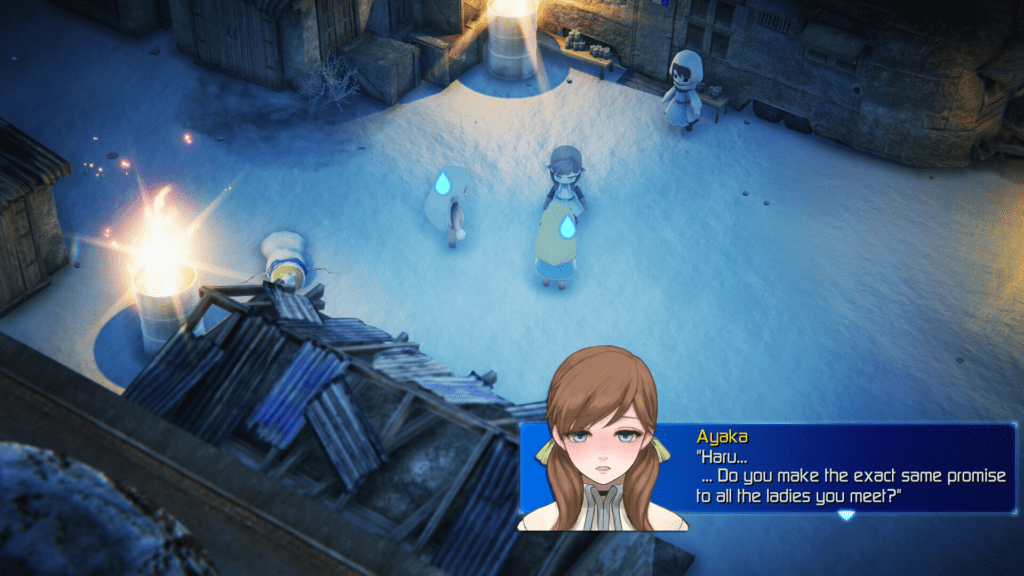
Gameplay
Unlike Episode 1, which took place in an steampunk-like city, Episode 2 offers more places to explore. You have new villages, forests, forgotten ruins and other places to visit. You’ll find items, new enemies which are relevant to the snowy setting, and NPCs who will struggle through such extreme conditions. Those who look hard enough will also find interesting secrets to uncover too. There are some new gameplay mechanics, such as maintaining temperature. If Haru does not arrive at a warm place after a determined time, he will pass out or even die. Also, there is a snowy labyrinth to explore, containing big rewards which make the excursion worthwhile.
One of the biggest changes is the addition of new party members. In the first Episode, you only had access to Haru and Kuroko, Haru’s childhood friend, but in this one, you have two new comrades: Ayaka and Kid. Ayaka is a healer-type; she has the special command Pray, and she only uses magic to attack so she has an extensive MP pool to compensate. She will be a substantial help during the trip through the Deeplands.
Kid appeared in the first chapter as an NPC, yet here you can play as her. As well as using basic attacks and magic, she can steal items from the enemies, making her something of a thief-class character like Final Fantasy VII’s Yuffie or Final Fantasy X‘s Rikku. With the appearance of new companions, you can use a new function to switch up your battle team. The battle team contains two members, and Haru is unmovable, so you will have to decide who will join you in later battles. You can change your companion at any save point.
Battles are an expansion of the those in Episode 1; They are turn-based, and you can use attacks, magic, unique commands, defence and items. Episode 2 also features additional ‘orbs’, Light Fairytale’s equivalent of Final Fantasy VII’s ‘materia’, which grant additional skills and spells. On top of the lightning orbs of the first episode, you now have access to other elemental orbs, including ice and fire, and both have their pros and cons. You can equip them on weapons to add elemental effects to attacks or to get extra defence against these elements.
Perhaps the most impressive aspect included in Episode 2’s combat is the addition of a couple of ‘summon’ spells, each with their own elemental properties. Both display a beautiful anime cinematic when used. The fury gauge makes a welcome return with some new additions for your growing party. It fills as your party member receives damage, and when full you can use a devastating special attack or spell reminiscent of Final Fantasy VII’s popular ‘Limit Breaks’.
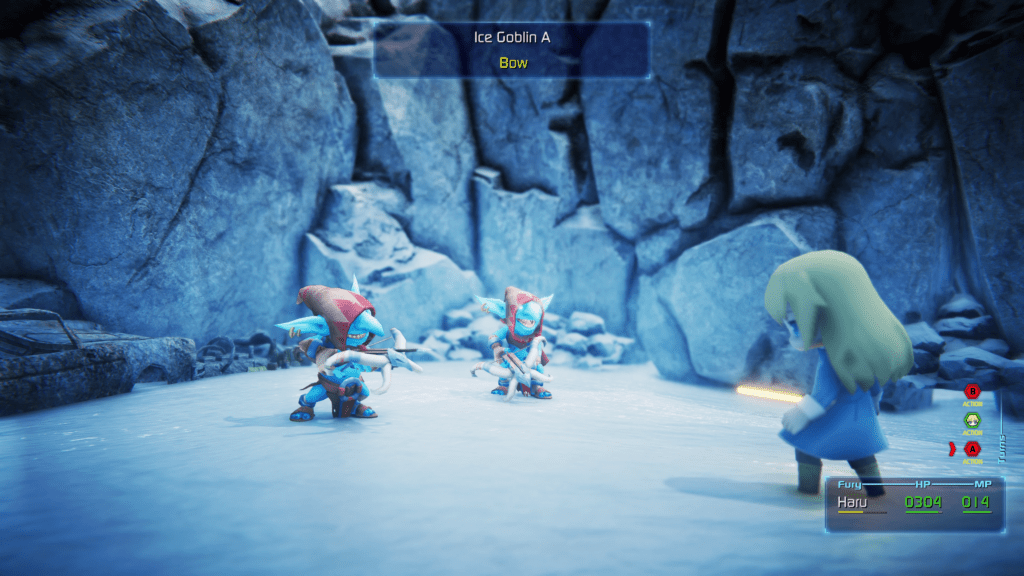
Graphics/Sound
There are so many nice touches despite a small budget, such as the occasional voiced line of Japanese dialogue, shine added to metallic surfaces and snow that glistens beautifully. It really is a pretty game and a Final Fantasy fan’s dream. It just goes to show how much you can achieve by simply rebuilding an old game in a new engine, without being so unrealistically ambitious.
The game feels bigger than Episode 1, including more playable characters, each with new sprites and animations, plus more diverse environments and dungeons, and more colourful magic, including some very impressive summon magic featuring flashy anime cutscenes which are really impressive. The familiar-sounding soundtrack also makes a welcome return.

Replayability/Trophies
As it’s a short game, the trophies push you to explore every inch of the map at specific times to find optional content. This means missable trophies; seriously, the game is absolutely riddled with missable content, so do make sure to use a guide if you want to finish with a perfect save-file, and the platinum trophy, of course. Sure, the game isn’t particularly long if you would prefer to restart, yet save-files are transferable from episode to episode so it does pay to get everything right in one playthrough.

Conclusion
Light Fairytale Episode 2 is a direct continuation of the previous title, yet it expands on what came before to deliver an even more satisfying experience with more content, more narrative twists, more characters and more combat mechanics. It manages to outshine even its impressive predecessor with its enhancements. For a solo-developed project, a limited budget and a low asking price, this is seriously impressive stuff.
Again, like Episode 1, the game delivers in providing the atmosphere in its simple environments where a certain big-budget remake struggled. As such, it’s a joy to play through, and whilst I can’t give it a perfect ten since the hit connection in battle hasn’t been fixed, the game comes so close by taking the greatness of its inspiration and polishing these elements to a mirror sheen. Now the hard part: waiting for Episode 3. This could be a few years. I’ll just have to enjoy Episode 2’s charming ending for now.
Joys
- More combat mechanics bringing the game ever closer to classic Final Fantasy
- Stunning anime summon magic spells
- A beautifully familiar story with plenty of twists and Easter Eggs
Cons
- Traditionalists might not enjoy episodic content
- Hit connection in combat still not fixed
